This article originally appeared on Inside Climate News, a nonprofit, non-partisan news organization that covers climate, energy and the environment. Sign up for their newsletter here.
Editor: This article uses the term Sea Stars, but I prefer to use the well-known name of Starfish (Patrick! Chocolate Starfish! Too many pop culture references. BONUS points if you know where the second one is from).
This article is about scientists finding the cause of massive Starfish die-offs, but there’s also an extremely important lesson we can learn from this Starfish story: The interconnectedness of nature.
For example, Starfish eat a certain sea urchin species that feeds on kelp beds in the ocean. This type of sea urchin could quickly eat through the forests of seaweed ecosystems if Starfish didn’t check their populations.
Global warming is causing certain bacteria that weren’t an issue to pop up as the world warms. One strain of those pathogens have caused massive Starfish die-offs. It deforms their bodies before melting them into slime (And guess what? This pathogen can affects humans, too!).
As the Starfish population rapidly declined, the sea urchin species they fed on exploded in population. They devoured several square miles of kelp beds, which, in turn, destroyed the habitat of several species—including the Giant Octopus and Sea Otters.
In nature, the extinction or change in population of one species will always have a ripple effect through the entire chain they’re part of. If one link in a chain is removed, it affects every other link in that chain.
Also, climate change and global warming are no joke!
Things are getting worse at a more rapid pace than scientists predicted. The yearly 1.5 °C temperature increase that indicates a “point of no return” or a “it’s too late to do anything about” milestone, was thought to be many years away. The new climate report from the United Nations climate scientists said that at this current rate, we’ll hit the 1.5 °C degree number by 2029!
And our government, as it sees the more frequent, more devastating extreme weather events happening all over the country, decides this is the perfect time to bring back coal processing plants, stop all progress in renewable energy—kill solar panel farms and wind turbines being built (and employing people living) in red States, including offshore wind.
While other countries (like China) kick our ass in new energy infrastructure and technology, the U.S. doubles down on burning fossil fuels for energy. This only worsens global warming and increases the damage to our planet.
These greedy billionaires are literally choosing to make more money over the survival of the human species!
Here are the details of the Starfish die-offs by Bob Berwyn of Inside Climate News.
The Massive Starfish Die-offs
After years of scientific sleuthing, a team of West Coast researchers reported that they have identified a particular strain of ocean bacteria that has killed more than 6 billion sea stars (starfish) since 2013.
In a paper published Monday in the journal Nature Ecology & Evolution, they said the Starfish die-off was caused by a type of Vibrio bacteria that was previously only known as a pathogen in some shellfish larvae.
Vibrio bacteria are more frequently causing problems in a warming world. The bacteria sometimes cause dangerous infections and intestinal illnesses in humans, including cholera.
The breakthrough finding will help scientists determine possible conservation or adaptation measures in response to the intensifying consequences of the Starfish die-offs. Sunflower sea stars, which can grow up to 3 feet across and sprout 24 arms, are critical to West Coast kelp ecosystems, where they devour certain types of sea urchins that can eat through the forests of seaweed if the sea stars don’t check their populations.
Sea stars first started showing signs of infection in 2013 and the bacteria quickly decimated their populations. Vast patches of millions of individuals from Alaska to Mexico died a grisly death, with the bacteria deforming their bodies and then melting them into slime.
Populations of the urchin species they fed on exploded and wiped thousands of square miles of kelp beds, which, in turn, destroyed habitat for many other species, including abalone, sea otters, kelp crabs, giant octopus and even herrings.
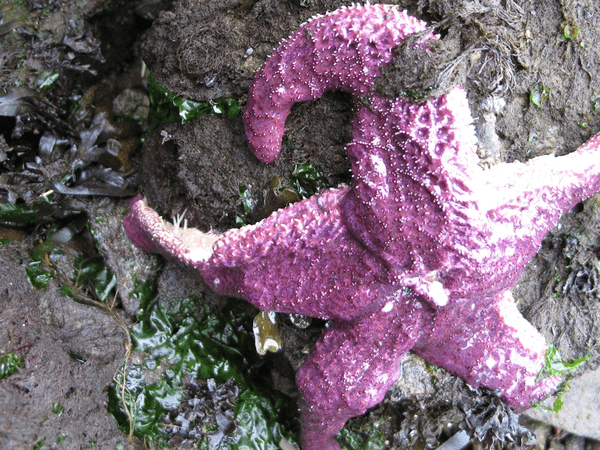

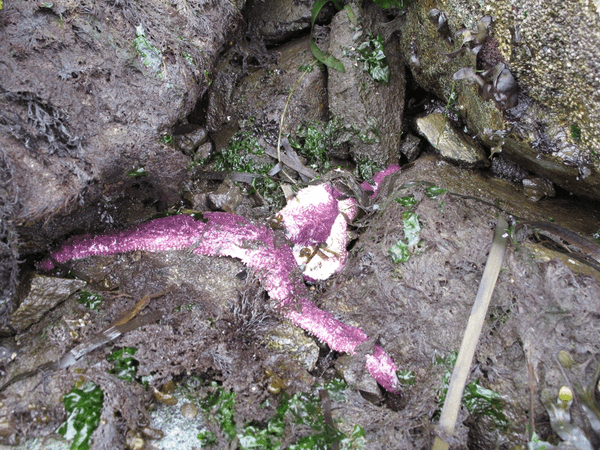
The Starfish die-offs are ongoing and have spread to new areas, making them one of the largest marine mass mortalities on record, said Hakai Institute researcher Alyssa Gehman, a co-author of the new paper.
“We have detected the disease through the entire range of the sunflower stars, from Alaska to Mexico,” she said of the regular outbreaks that have occurred in recent years, “predominantly in August, September, October, the warmer months or right after the warmer months of the year.”
In all, scientists have seen signs of the disease in 26 species, but the sunflower stars were hardest hit and appeared to be completely eradicated from some areas. There have been some small signs of new life in some sunflower star habitats recently, including along the California and Oregon coasts.
“For many years they were gone. Nobody saw a sunflower star for quite a while,” she said. “But in the last two or three years, we’ve started to see some. About 10 that have been observed, which pales in comparison to their previous numbers, but it’s above zero, which is hopeful.”
At the same time, however, the Vibrio infection has spread into new territories, including the coast of British Columbia and Alaska, where as recently as the spring of 2024, scientists were still documenting high sea diversity and dense populations of sea stars.
“We went there again in October, and saw a very large disease outbreak,” she said. “We went back in May of 2025 and there were basically no sunflower stars there anymore.”
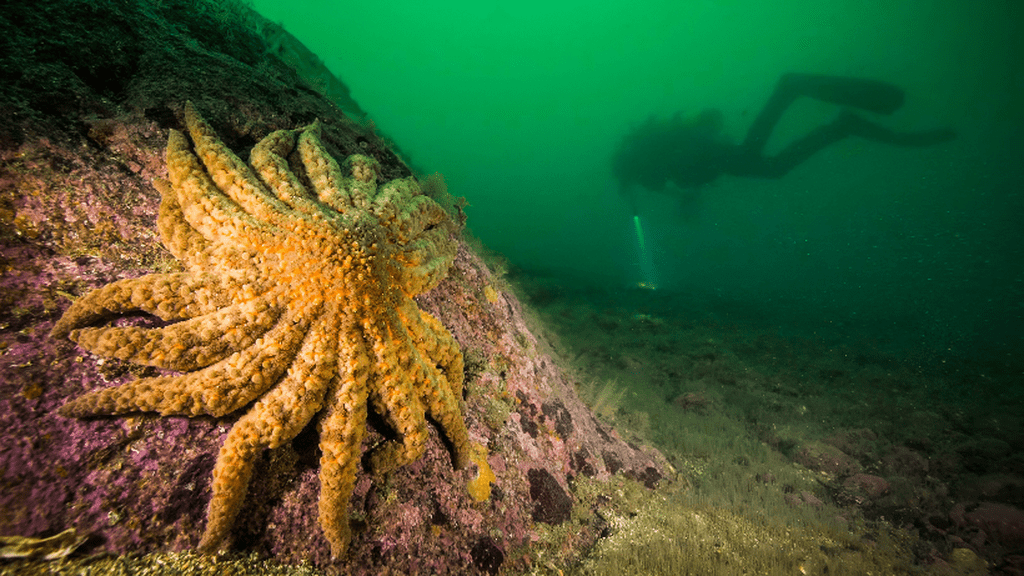
Accelerating Impacts, Slow Science
Human activities are speeding disruptions in many ecosystems and the rapid expansion of the Vibrio-driven sea star die-off shows how the impacts sometimes outpace scientists’ ability to study them.
The sudden spread of the disease caught scientists off guard, and for many years they suspected a viral pathogen, Gehman said. But researchers didn’t have much information about what the ecosystem was like before the outbreak.
“We didn’t know what was normal for the microbes and bacteria and the viruses in these systems,” she said. “When you don’t have a good idea of what used to be there, it’s hard to find what’s new.
And that’s part of why we found the wrong thing for a while was because we found a virus and then it turned out to be a normal virus.”
The new findings resulted from several years of painstaking lab work, including seven controlled exposure experiments using quarantined wild and captive-bred sunflower sea stars that showed a living, non-viral agent was involved in transmission of the condition.
The scientists then sequenced the genome of the microbial communities in the tissue of healthy and diseased sea stars and identified Vibrio pectenicida as a causative agent of the disease.
They confirmed that result in the lab, where pure samples of the bacteria killed healthy sea stars within weeks.
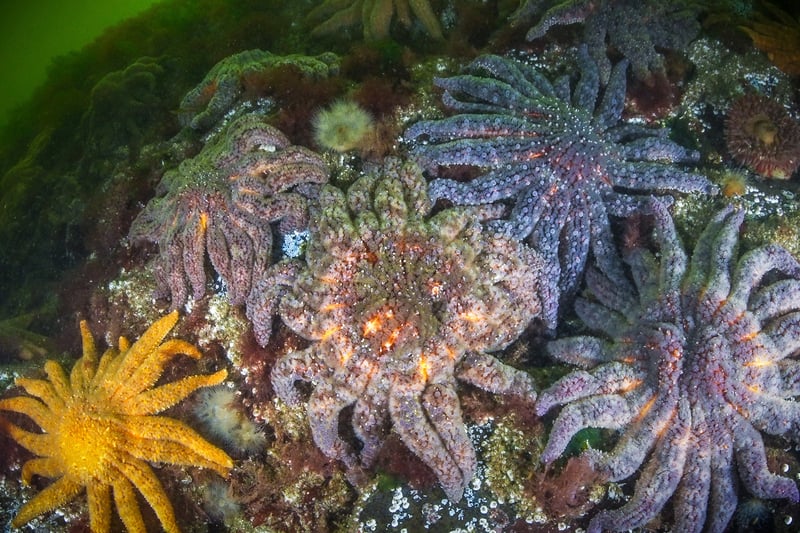
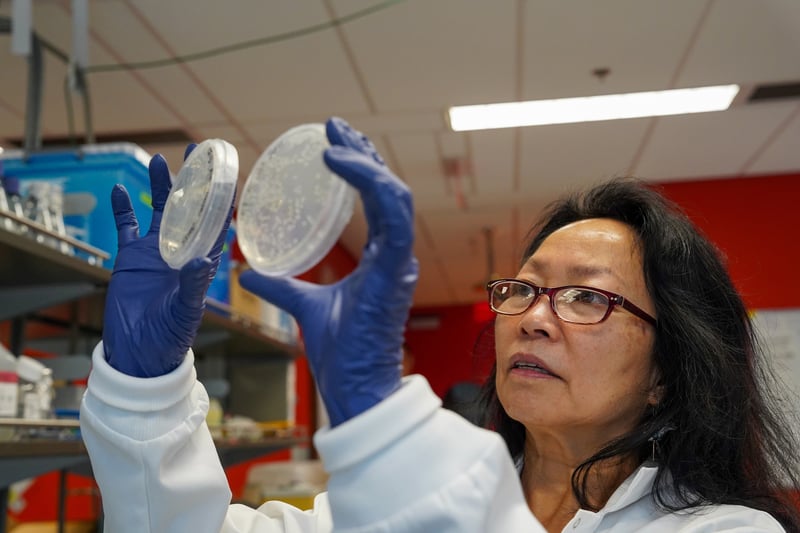
Despite seeing several other sea star die-offs during his decades of research, U.S. Geological Survey scientist Kevin Lafferty was “unprepared” for the scale of the current mortality event when he went diving in 2014 and immediately saw hundreds of sea stars laying “twisted and disintegrated where they normally would have been hunting,” he wrote in a News & Views article accompanying the new study.
Some sunflower sea star populations collapsed by 90 percent, and some of those areas subsequently lost 80 percent of their kelp forests, “with the potential to affect nearshore fisheries,” he wrote.
Figuring out how the sea stars catch the disease would be an important next step for research, he wrote, and since the pathogen affects shellfish that the sea stars eat, that is a possible pathway. Another possibility is that the particular Vibrio strain driving the die offs may have evolved to switch hosts from bivalves to sea stars. “Bacterial evolution towards increased virulence has been seen during oyster mortalities,” he wrote.
The origin of the pathogen is also still unknown, he wrote, but aquaculture has been responsible for the spread of various other marine pathogens, including some that have infected wild abalone and shrimp populations.
The new findings can help recovery by enabling testing and biosecurity options for captive breeding, for screening the health of individuals before moving them to the wild and for selecting those with tolerance and resistance to the disease for breeding or transplantation, he wrote.
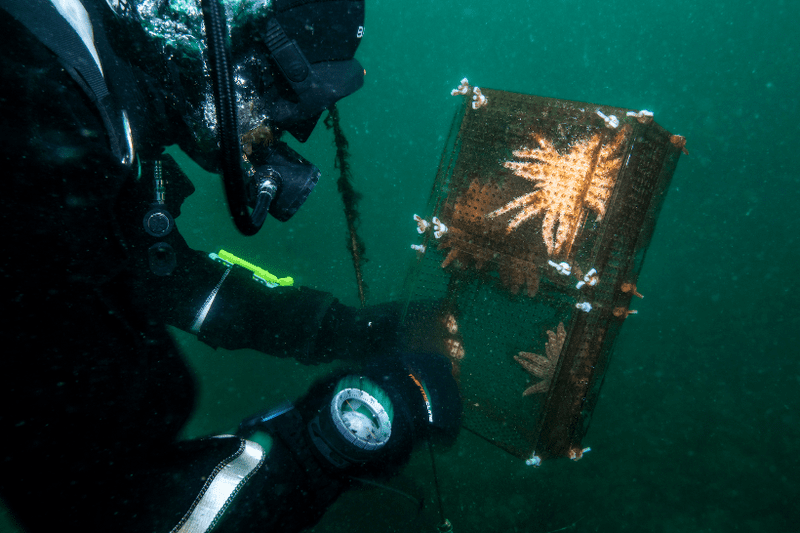
Is Recovery Possible?
Other research shows that Vibrio species, especially those that can cause cholera in humans, can be “highly sensitive and responsive to climate change,” said Erin Mordecai, an infectious disease ecologist at Stanford University who was not involved in the new study.
“It is possible that warmer water temperatures combined with other ecological and evolutionary factors led to this devastating outbreak and die-off,” she wrote in an email, “but we don’t have that evidence definitively yet.”
This story is funded by readers like you.
Our nonprofit newsroom provides award-winning climate coverage free of charge and advertising. We rely on donations from readers like you to keep going. Please donate now to support our work.
In a global context, it’s clear that climate change is “increasingly affecting the burden and geographic range of infectious diseases,” she said. A July 31 paper she co-authored attributes increased dengue fever burden to climate change.
Vibrio bacteria have been found in the massive piles of rotting sargassum seaweed piling up on some eastern Atlantic Ocean and especially Caribbean beaches recently, which the National Science Foundation called “a perfect pathogen storm.” Strains of the bacteria were also documented in mass marine mortalities in the Mediterranean Sea since 2010.
In the United States, a 2022 study found that annual cases of “illness contracted through food- and waterborne exposures to various Vibrio species found in estuarine and marine environments, including within aquatic life, such as shellfish and finfish,” would increase by 51 percent by 2090, with an annual toll of $5.2 billion in medical costs, lost income from reduced productivity and indirect costs from deaths.
A large amount of research has linked increased Vibrio infections with human-caused global warming, Mordecai said, and “it is very plausible that these epidemic dynamics are driven partly or largely by climate change, and other corresponding stressors like changing ocean chemistry and circulation patterns and anthropogenic inputs, but we don’t yet know that for sure for seastar wasting disease.”
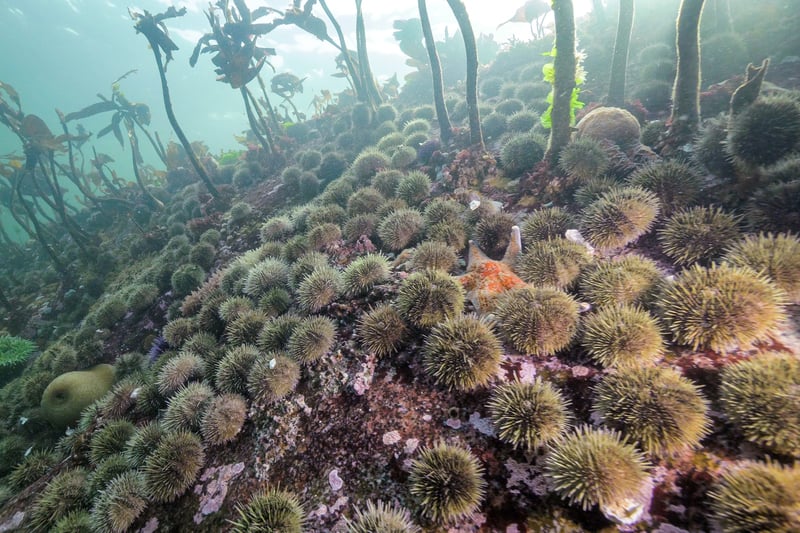
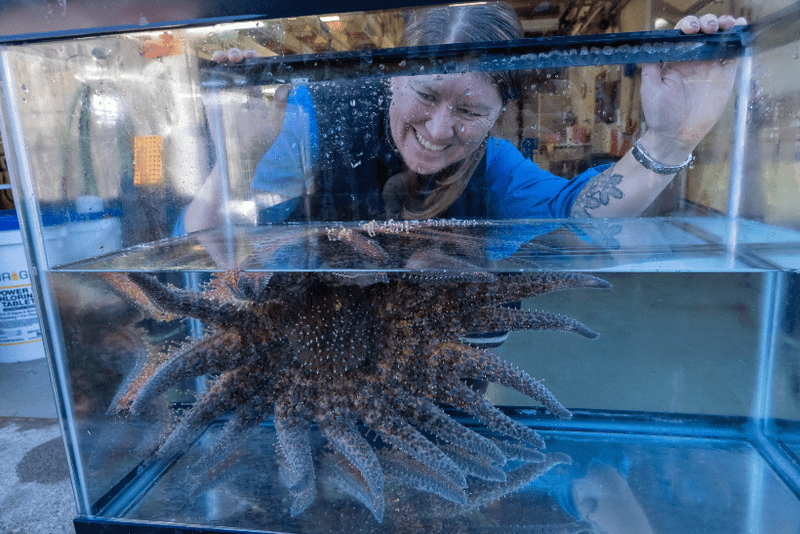
The team drew on related work by one of the study’s co-authors, Drew Harwell, which showed that “some of the outbreak timing and the outbreak magnitudes are related to anomalously warm waters,” said Gehman, the study’s senior author. Other papers show that cooler temperatures slow down progression of the disease, she added.
Another research project found the disease in refuge sea star populations in fjords along the coast of central British Columbia, which have cooler water where “It just doesn’t seem to lead to the same level of mortality,” she said.
But the combination of cooling winds and freshwater inflows in the fjords can’t be counted on in a warming climate.
“They’re all things that are influenced by climate change,” Gehman said. “So I’m constantly worried that any of the things that are protecting them won’t happen, and that we might just lose all of that population in one year because of how the disease works.”




 Climate
Climate


